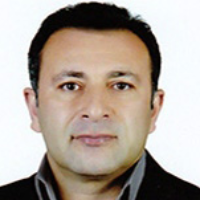Identification of polymorphism Insulin-Like Growth Factor I gene and its association with body weight in Japanese quail
In order to take advantage of breeding programs and productivity of poultry and other domesticated animals, it is essential to assess genetic variability and study the strategies to preserve genetic diversity. The Japanese quail is widely used as a model for animal research purposes in laboratory studies because of its small body size, short intergeneration interval, high growth rate, production of more eggs and meat. Although, Japanese quail has various benefits as a laboratory bird, but its genome sequence is not accessible now. The genome sequence of Japanese quail will deliver important genomic resources to accelerate different studies and to authenticate divergent lines of Japanese quail. Growth is a complex physiological pathway that occurs from fertilization until maturity in birds. Insulin-like growth factor I (IGF-I) gene is one of the most important candidate genes in different species which can affect the performance traits because of its function in metabolism and growth. IGF-I is a 70 amino acid polypeptide hormone with endocrine, paracrine, and autocrine effects. It has been reported that there is association of genetic polymorphisms of the IGF-I gene with growth traits in the poultry. There are relatively few reported studies about the relation between genetic markers of the IGF-I gene and body weights in quails. The objective of this study was undertaken to identify polymorphisms of the IGF-I gene using PCR single-strand conformational polymorphism (PCR–SSCP) analysis and to evaluate association of these polymorphisms with body weight in the Japanese quail.
For doing this research, body weight of the 110 quails under study (46 males and 64 females) in different ages were collected. All data were collected from the Natural Resources Research Center of East Azerbaijan. The data included the identification of the animal, year of birth, sex, body weights at 15, 30, 45 and 60 days. Genomic DNA was extracted from 10 μl of blood in presence of Pronase (Bailes et al., 2007) and stored in EDTA-coated tubes and placed immediately inside an ice box and transferred to the laboratory. The samples were stored at -20 until DNA has been extracted. The quality and quantity of extracted DNA were measured by %0/8 agarose gel electrophoresis. PCR was done for amplifying a fragment in size of 465 bp of IGF-I gene. The PCR primers for the IGF1 gene were designed based on GenBank. PCR primers of IGF-I gene was mentioned in Table 1. The PCRs were carried out in 25 μl volumes containing 1 unit Taq DNA Polymerase, reaction buffer 1X (Sina Gene, Tehran, Iran), 1/5 mM MgCl2, 0/2 μM each of dNTPs, 10 μM of each primer (Sina Gene, Tehran, Iran) and 30 ng of genomic extracted DNA as template. PCR was performed using the T-professional thermal cycler. The thermal profile consisted of 3 min at 95°C, followed by 35 cycles of 40 s at 95°C, 30 s at 58°C and 40 s at 72°C, with a final extension of 5 min at 72°C. Amplification was carried out in Mastercycler (Bailes et al.,2007). PCR products were detected by electrophoresis on %1/5 agarose gel containing ethidium bromide and were visualized in a gel documentation system with a UV transilluminator. PCR products were mixed with 20 μl of denaturing loading dye [95% deionized formamide, %0/35 xylene cyanol, %0/25 bromophenol blue and 10 mM EDTA] in a total volume of 10 μl. The mixture was denatured at 95°C for 15 min and was snap chilled on ice. The electrophoresis was performed in 0.5X TBE buffer (Tris 100 mM, boric acid 9 mM, EDTA 1 mM) at room temperature (18°C) and constant 110 V for 16 h. Polyacrylamide gels were stained with silver according to the protocol described (Benbouza et al.,2006). A statistical model included the mean of population, fixed effect of the sex, random effect of the genotype patterns and residual random term was done by using GLM of SAS software to find the association between the SSCP genotype patterns of PCR products with the body weights. Significant differences among means of different genotypes were calculated using Duncan method in the GLM program and P values of 0.05 were considered statistically significant.
The investigation of candidate genes is one of the foremost techniques to reveal whether definite genes are associated with the economic traits in animals. We successfully amplified the exon 4 of the IGF-I gene. All extracted DNAs from quail blood samples yielded a specific single band PCR product without any nonspecific band. Therefore, the PCR products were directly used for SSCP analysis. The results of SSCP showed that this population was polymorphic at the studied loci and three different genotypes with frequencies of 7.27%, 50.91% and 41.82%, respectively were observed in the examined quails (Figure 3). The results indicated that the exon-4 of IGF-1 gene is polymorph and there was a significant difference (P<0.05) between the genotype patterns and body weight on 30 days. However, for association of gender effect on body weight, there was a significant difference (P<0.05) in the age of 60 days. Also the average daily gain in females is more than males in different ages.
The goal of this study was to determine genetic polymorphism of IGF-I gene in Japanese quail. According to this research, the selected locus for investigating of IGF-I gene in quail can be considered as a locus that effects on body weight and growth rate of quails. It can be also measured as the factor that cause of difference of body weight in different periods.
- حق عضویت دریافتی صرف حمایت از نشریات عضو و نگهداری، تکمیل و توسعه مگیران میشود.
- پرداخت حق اشتراک و دانلود مقالات اجازه بازنشر آن در سایر رسانههای چاپی و دیجیتال را به کاربر نمیدهد.



